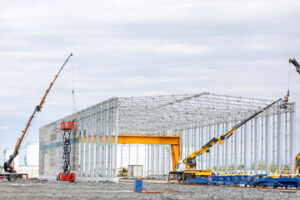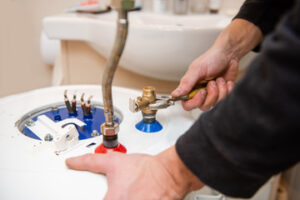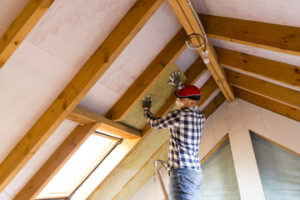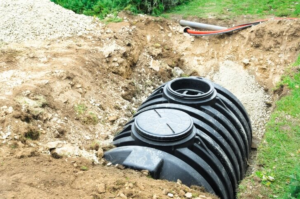Painting New Drywall may need to be painted for several reasons; whether you just moved in, did some renovations, or are replacing damaged areas of the wall. Regardless of the reason, it is imperative that the walls are properly sanded and primed before painting.
This will help to ensure that your paint job is even and that the color lasts. Proper prep will also reduce issues that come with the porous nature of drywall.
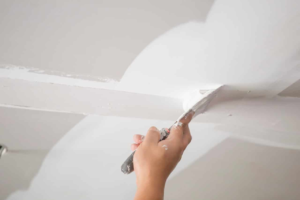
Drywall sanding is a major step that often gets overlooked when painting a room, but it’s essential to getting a quality paint job. Drywall sanding smooths out the taped seams, fills in holes and nail gouges, and helps create an even surface to apply primer and paint. To sand correctly, you’ll need a good quality sander, a sanding sponge and some high-quality sandpaper in varying grits. In addition, you’ll want a double-strap dust mask to protect yourself from inhaling drywall particles and some form of eye protection, such as safety glasses or a face shield.
There are two different types of sanding methods for drywall—dry and wet. Choosing wet sanding adds a moisture component to the process, which softens the compound and helps reduce grittiness. However, wet sanding takes longer and may not result in as smooth of a finish as dry sanding.
If you do choose to wet sand, always follow the manufacturer’s instructions on the product you’re using. If you use too much water, the mud could become waterlogged and lose its effectiveness. Additionally, too much water can lead to a softened surface that’s more difficult to work with, and can also cause a “rainbow” effect in the finish when it’s dried.
Aside from being messy and time-consuming, sanding drywall can be dangerous for those who aren’t properly prepared. For example, if you’re sanding while the mud is still wet, you could ruin the surface of the wall by leaving ridges that will be visible under light. Additionally, sanding too hard could tear the paper covering that covers the gypsum inside and shorten the lifespan of the drywall.
Lastly, if you’re working on your own, it’s important to take your time when sanding. It’s easy to get rushed and end up with an uneven finish. Instead, be patient and make sure you’re using the right sander for the task at hand. The key to a successful sand is going over every inch of the wall and working in consistent, circular motions. This will help prevent sanding lines that will show through once everything is painted.
Primer
Once the drywall is clean, any necessary repairs are made and the sanding process is completed, it’s time to apply primer. This is an important step that allows the wall to properly lock in paint and set up for long-lasting results. It also helps to reduce the amount of paint that is required to cover the surface.
There are several different types of primer, but it is best to select one that is specifically formulated for use on drywall. This will ensure that the primer is safe to use in your painting environment, and will provide a good foundation for your new paint job.
After applying the primer, allow it to dry for a few hours before moving on to the color coat. It is also a good idea to wipe down the walls to make sure there are no loose crumbs or dust that could interfere with the quality of your finished product.
Drywall is a very porous material. The gypsum and paper components of drywall are naturally absorbent, which makes it difficult for paint to adhere to the surface. A quick sand and application of a specialized drywall primer can help ensure that paint will not only stick, but will be able to stay in place and stand up to the test of time.
A high-quality drywall primer can help to ensure that your paint project will go off without a hitch and will look professional for years to come. It can help to eliminate the need for many extra coats of paint, as well as minimize the need for paint thickeners.
Once you’ve chosen your primer, be sure to follow the manufacturer’s instructions on how to apply it. A good rule of thumb is to apply the primer in a v or w pattern, starting at the top of the wall and working down toward the bottom. After the primer has dried, it is a good idea to lightly sand it again with a pole sander and then wipe down the walls once more to remove any remaining dust from the surfaces of the drywall.
Paint
When painting new drywall, it’s important to follow all of the necessary steps to ensure that you get an even coat of paint with no streaks or drips. It’s also important to make sure that you allow each coat of paint to dry fully before applying the next. A minimum of two to four hours should be allowed for each coat to dry.
Using the right painting techniques can also help you achieve an even coat of paint. For example, rolling the paint in a “W” pattern will reduce the appearance of roller marks and give you an even distribution of paint from edge to edge. It’s also a good idea to apply multiple thin coats of paint rather than a single thick one.
It’s common to cut corners when it comes to home renovation projects in order to save money and time. However, skipping steps or using low-quality materials can negatively impact the final result of your project. This is especially true when it comes to interior painting, where the quality of your paint job can significantly influence the overall look and feel of your newly redesigned space.
One of the most common mistakes that homeowners make when painting their own homes is skipping the primer step. While bare, new drywall may not seem like it needs a primer, it’s actually a very porous surface that can cause the first coat of paint to crack or peel.
The best way to prevent this from happening is to use a high-quality drywall primer, such as Sherwin Williams’ Special Drywall Primer. This will seal the drywall and mud, making it much more receptive to new paint.
Once you’ve applied a few coats of drywall primer, you can start thinking about the paint color options for your new redesigned space. Keep in mind that different types of paint have varying levels of hiding power, color vibrancy and durability. These factors can be influenced by the pigment volume concentration (PVC), binder content, and additives.
For example, a higher PVC will produce a paint that hides well but won’t hold up to stains or scratches as well as a lower PVC. Other additives can include fungicides and algaecides to protect the paint finish from microorganisms, driers to make the paint dry faster, and thickening agents to minimize shaking and stirring.
Finishing
If you’re a homeowner who’s trying to tackle a drywall painting project on your own, it’s important to remember that this is a process that requires patience and attention to detail. If you’re rushed or skip any steps, it could lead to an uneven paint job that doesn’t stand up over time. This can ultimately ruin the look of your room, so it’s best to take the time to follow these simple steps to ensure that your drywall paint jobs go smoothly and turn out professional.
Before you begin painting, make sure that your drywall is fully dried, and then lightly sand it. It’s also a good idea to wipe the wall down with a damp cloth, as this will help to remove any dust that may have settled on the surface of the drywall.
Once the sanding is done, apply a thin coat of drywall primer. This will give the drywall a smooth finish, and will help to protect it from moisture. You can use a roller, brush or sprayer to apply the primer. Most projects will require a minimum of two coats, but feel free to add more if needed.
Afterwards, wait for the primer to dry completely. Then, you can begin painting the new drywall. Be sure to use a high-quality, moisture-resistant paint, and to sand it meticulously after each coat. If you want to achieve a sleek, modern look in your space, consider using a gloss paint instead of a traditional matte or flat finish. This will give your walls a luxurious shine that’s easy to clean, and will provide a lasting, durable finish.
When you’re finished painting, be sure to remove all of the drop cloths and painter’s tape, and then clean up any debris that may have accumulated from the painting process. Once the paint is dry, you can replace any furniture that was removed from the space, and enjoy your new, professionally painted drywall! If you’re looking for a team of experts to handle your next painting project, contact the experts at Pro Paint and Finish. We can provide you with a fast, professional service that will leave your new drywall looking great!




